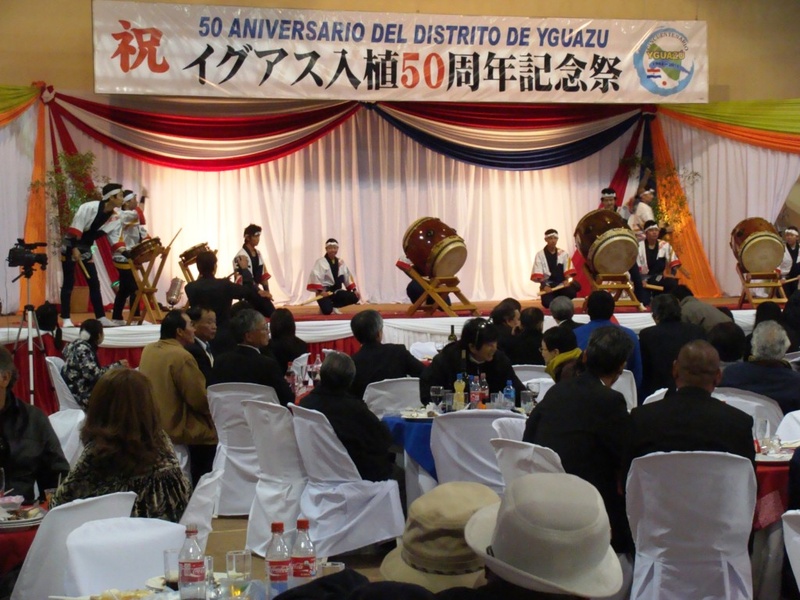It was a shocking story that made me say, "Not again!"
The National Institute of Rural Land Development (INDERT) has once again brought up the issue of "surplus state land," which arose in 2005 and is assumed to still exist in the Japanese settlement of Iguazu in Paraguay.
This accusation is simmering from time to time in the municipality of Juan Leon Mallorquín, which is adjacent to the western part of the settlement. It is none other than the INDERT authorities who are backing it up and making it a threat to the Japanese immigrants.
On September 10th, the Rural Development Agency requested, under then Director Horacio Torres, a legal survey of the former property No. 77 (current property No. 631), which constitutes the Yguazu settlement. Needless to say, the settlement, which covers 87,000 hectares, is clearly private land intended for development, purchased in 1960 by JICA (the former Japan International Cooperation Agency).
The legal measurement of the matter requested by INDERT is currently under review by Judge Juan Palacios of the city of Asuncion.
The Japanese side should strongly assert and point out that the Yguazu Colony was established in Pakistan as one of the objectives of the Japan-Pakistan Migration Agreement. JICA purchased the 87,000 hectares of the old site No. 77, and of course completed the legal survey. The new site No. 631 was registered under JICA's name by Decision No. 241 dated August 17, 1961. Of course, the settlers paid JICA for the land each time they developed it and engaged in farming.
The entire area of the Iguazu Colony is clearly private property, based on legal surveys. There is no surplus state land anywhere in it. It is private property registered under a formal sales contract, number 631. Despite this, INDERT is now demanding that a legal survey be carried out on the parts of the colony that are not state property. However, this is a clear excess of authority by the authorities.
Mario Noguera's secret maneuverings
In mid-2005, the San Rafael Regional Council requested INDERT to carry out a legal survey of approximately 8,000 hectares of surplus state land (equivalent to the area of the La Colmena colony) that was assumed to exist within the Japanese Iguazu colony. As a result, in 2007, the Land Development Agency (INDERT) approved the carrying out of a comparative legal survey of the old and new properties, nos. 631 and 77.
On October 17, 2017 (12 years later), INDERT authorized the creation of the said team of surveyors, headed by Engineer Filemon Melgarejo, and recently, on September 10, a request to carry out a statutory survey was submitted before Judge Juan Palacios.
It has been 12 anxious years, from 2005 to 2017, but thanks to the efforts of Juan Leon Mallorquín Mayor Mario Noguera, the issue of the legal survey of 8,000 hectares of hypothetical surplus state land has been resurrected.
What is puzzling is that INDERT itself conducted a topographical survey of the Yguazu settlement in 2014, but the surveyor in charge reported that "no surplus state land was found" in the area.
Talking about the existence of state-owned surplus land means nothing other than the invasion of private land by self-proclaimed "landless farmers." It is said that there are currently over 800 "landless farmers" who, with the tacit consent of INDERT, are attempting to invade the "state-owned surplus land" of the Japanese Iguazu colony.
It is an open secret that the main instigator behind this is Mayor Mario Noguera.
100th anniversary of the establishment of diplomatic relations between Japan and Pakistan
On November 8th, Shinichi Kitaoka, president of the Japan International Cooperation Agency (JICA), paid an official visit to Paraguay as part of the 100th anniversary celebrations of the diplomatic agreement on friendly relations between Japan and Paraguay that was signed on November 17th, 1919.
Paraguay is considering requesting new types of economic assistance and cooperation from Japan, and the Japanese government remains intent on responding to such requests. The Japanese government has traditionally shown its friendship with Paraguay, a pro-Japanese country that has been generous in accepting agricultural immigrants, and it is well known that it has provided the largest amount of economic assistance to the country out of all the countries in the world.
To repeat, this year is a significant milestone, marking the 100th anniversary of the establishment of diplomatic relations between Japan and Pakistan, and the 40th anniversary of the Japan Colonization Agency being absorbed into the new independent administrative agency JICA under the Migration Agreement. However, President Kitaoka must have had bittersweet feelings about his official visit because of the ridiculous land issue at the Yguazu Colony, instigated by the aforementioned thoughtless political thugs.
What a wonderful way to celebrate the 100th anniversary of the establishment of diplomatic relations between Japan and Pakistan!
Why is Mayor Noguera interested in other people's private property?
Mario Noguera, the mayor of Juan León Mallorquín, openly admits his interest in the Japanese-owned land in the Iguazu region. He insists that there are 8,000 hectares of surplus state land in the region, a fact that was confirmed by INDERT when it carried out a comparative study of the old and new legal surveys of the region. However, there are doubts about the borders, and he wants the 8,000 hectares in question to be incorporated under the jurisdiction of the municipality of Juan León Mallorquín.
The Japanese settlers achieved high growth and development in their settlements through their tireless diligence and hard work. If they had time to envy others, they should have worked hard themselves.
(Author's note: See the article in the Paraguayan newspaper ABC dated November 5th.)
*This article is reprinted from the Nikkei Shimbun (November 13th edition).
© 2019 Kunio Sakamoto / Nikkey Shimbun



